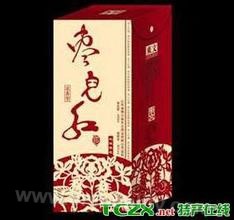welcomeSpecialty Foods Products!

The hardest product of jujube wine Quyang is jujube wine. Don't believe it. There are poems to prove it: one cup and two cups don't go to the head, three cups and four cups hold the wall, five cups and six cups hold the wall, but I won't go. In Quyang, jujube wine has cultivated heroes and tough guys for generations, which can be confirmed by Quyang's idioms: What's the matter? White is not so good! Brewing process of Quyang jujube wine: soaking jujube: pour jujube into a large pool and soak it until soft, crush chaff or corn straw, put jujube into a grinder and crush it into mud, then put it into a blender and stir it with chaff or straw. Fermentation: Blend according to the proportion of three thousand Jin jujube, six large baskets of straw or chaff, and mix well (in the first cellar, add a proper amount of distiller's yeast. ), put the jujube bran mixture into a square pit, cover it with plastic cloth, then cover it with chaff (for heat preservation), and insert a long corn stalk from the top to the bottom of the pit (equivalent to a thermometer). Burning: After ten to fifteen days of fermentation, you can start shochu. Seven, the cauldron of shochu is called Sakai, because it has to contain a lot of distiller's grains, so the pot is very high. Water is added to the bottom of the pot, and a grate is placed horizontally on it. The distiller's grains are placed on the grate, and an iron sheet with a concave middle diversion trough is placed on the distiller's grains, which is used for receiving wine. Above it is a shallow-bottomed iron pot, which is used to cool alcohol vapor. Put the shallow pot on the top and add cold water to the pot, so that you can officially light the shochu. Matters needing attention: First, the ratio of jujube to chaff. Second, the degree of fermentation, fermentation is not in place or too much. Usually, experienced masters measure the temperature through straw inserted into the fermentation pit, which is entirely based on the feeling and experience of hands. If a thermometer is used, the fermentation temperature should rise to 40 degrees and then drop to about 18 degrees. The third is the temperature when firing, mainly depending on the temperature.
Reprinted with attribution:
https://cnlocality.com/(Chinese Specialty Products)
other
consult:(+86)13225231905